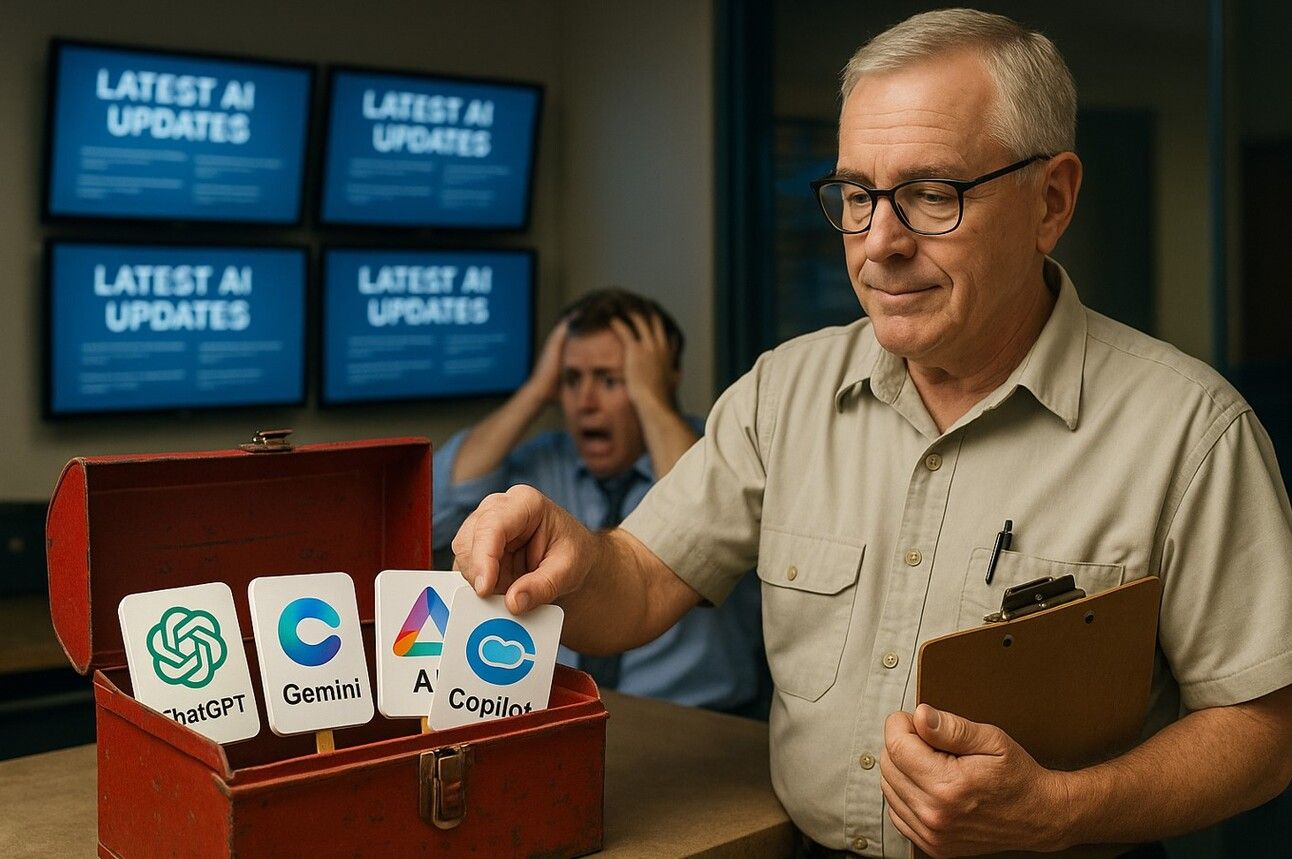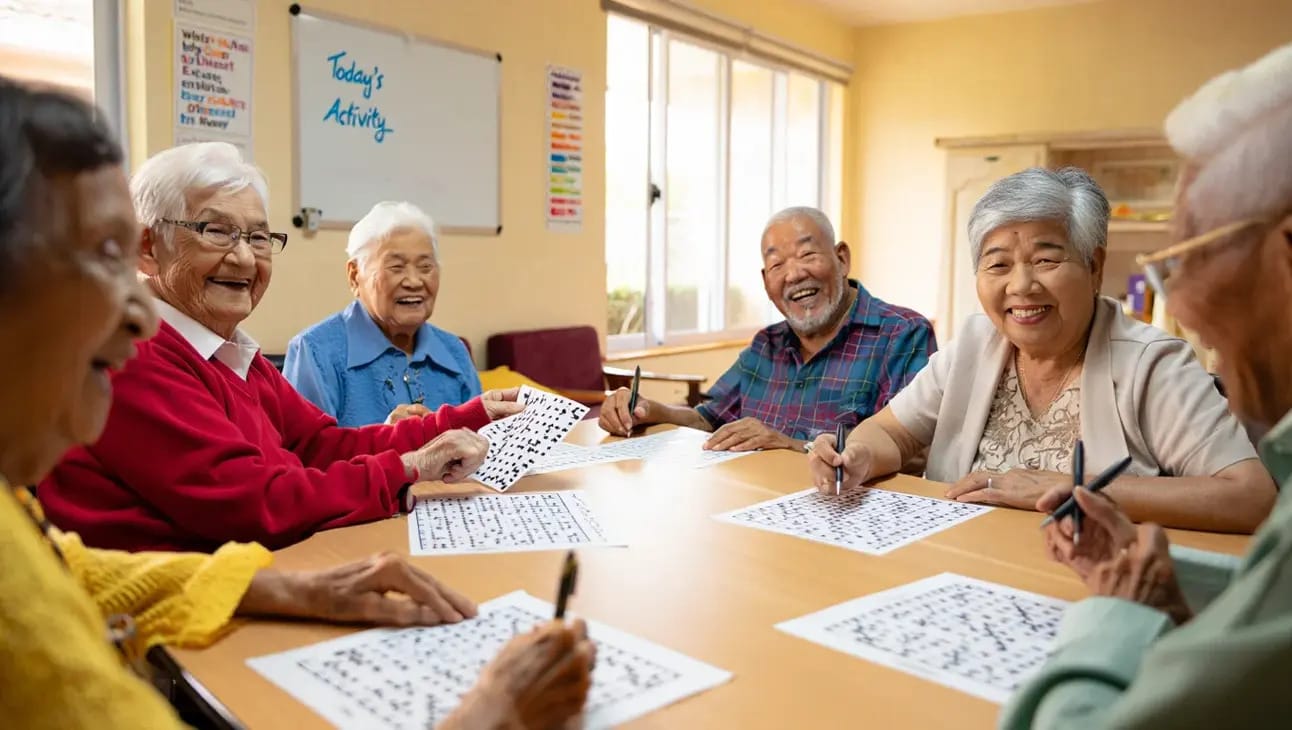- AgeFriendly.AI
- Posts
- 🛠️ Which AI should you use? (Plus: a creative tool for Lifestyle Coordinators)
🛠️ Which AI should you use? (Plus: a creative tool for Lifestyle Coordinators)
Good morning future-focused leaders.
With new AI tools and models launching every week, it’s easy to feel overwhelmed. But success with AI isn’t about having the latest model, it’s about using the one that works for you. This week, we look at how to choose wisely without the hype. Plus, I share a hands-on idea for Lifestyle Coordinators: use AI to create custom crosswords that boost engagement and fun!
What else we cover this week:
Microsoft’s new report on generative AI in healthcare
Learn AI for free – no tech background needed
Dr Eric Topol challenges anti-ageing pseudoscience
Why AI skills are fast becoming essential
And more...
LATEST DEVELOPMENTS
ANALYSIS
🛠️ You don't need the latest AI to make it work

In brief: With new AI models launching constantly, some of the questions I am often getting are: “Which AI is best? What AI should I be using? Which one’s best for XYZ?” The answer is, success with AI depends more on how you use it—not which AI you’re using.
The details:
Right now, there are numerous apps out there such as ChatGPT, Copilot, Gemini, and more. Many feel overwhelmed by the rapid release of AI tools and updates.
You don’t need to use them all—just choose one that works for you.
Remember to start small, focus on real use cases (like summarising notes, generating reports, etc.) and build your (and your team’s) confidence before expanding.
Think of AI apps like email apps. You’re probably using Outlook or Gmail, and not switching every time a new email app is launched.
Why it matters: For those of us working in aged care, being strategic is key. You don’t need the latest AI model to see benefits. Most current tools are already more than capable of supporting most of the functions we need to use them for. Chasing the latest update, or the “perfect” AI app for a specific job can overwhelm you or your team. Start simple, get results, then grow from there.
THE FUTURE OF AGED CARE
🧠 Generative AI in healthcare: What our sector needs to know
In brief: A new Microsoft report outlines how generative AI is transforming healthcare—with clear takeaways for aged care providers navigating digital transformation.
The details:
AI is now mainstream: 79% of healthcare organisations already use AI, delivering $3.70 in value for every $1 spent.
Efficiency gains: Generative AI is streamlining documentation, surfacing critical care data, and improving both patient and staff experiences.
Workforce benefits: Automating repetitive admin tasks helps relieve pressure on stretched aged care teams.
Barriers remain: Common hurdles like fragmented data and legacy systems are also deeply felt in aged care—overcoming them requires strong leadership and cross-functional collaboration.
Responsible AI use: Ethical considerations—like privacy, consent, and equity—must be embedded from the start. Frameworks such as Trustworthy AI and networks like TRAIN can guide safe implementation.
Practical aged care use cases: Language translation, health chatbots, clinician support tools—all of these AI-driven innovations can directly support culturally diverse and complex-needs clients.
Path to maturity: The report offers a five-stage roadmap from AI exploration to full realisation, stressing leadership, readiness, and integrated partnerships.
Why it matters: For aged care providers, the implications of this report go beyond efficiency gains. Generative AI represents a structural shift with the potential to address persistent sector challenges. This is a chance to reimagine aged care delivery around smarter, data-informed, and more person-centred models.
QUICK HITS
📘 Learn AI for free – no tech background needed – The Elements of AI is a free online course series from MinnaLearn and the University of Helsinki. Their purpose is to encourage as broad a group of people as possible to learn what AI is, what can (and can’t) be done with AI, and how to start creating AI methods. The courses combine theory with practical exercises and can be completed at your own pace.
🧬 Super Agers challenges health fads with science – In Super Agers: An Evidence-Based Approach to Longevity, Dr Eric Topol takes aim at the pseudoscience of anti-ageing fads and biohacking. He argues that with better behaviours, biometric data, and the power of AI, we can prevent age-related diseases like cancer, heart disease and dementia.
💡 Why learning AI is the smartest career move right now – The CEO of one of the world’s largest online platforms for freelancers and creators has urged his team to upskill in generative A and large language models in order to stay relevant. From content creation to customer service, the ability to work with AI is quickly becoming a must-have skill across all industries.
💸 How bias in AI data can have adverse effects – I came across an older article about a 2019 case where a major US health system used AI to prioritise patients for urgent care. Instead of measuring actual medical need, the system ranked patients based on their past healthcare spending. This meant wealthier patients who could afford more frequent care were pushed to the front of the line, while poorer patients with more serious conditions were deprioritised. The system didn’t intend harm, it simply reflected the bias in the data it was given. This example shows how AI, when trained on flawed assumptions, can reinforce inequality in ways that seriously affect people’s lives.
🔍 AI in Aged Care: BBC Investigates Aged Care Future – A new BBC report explores how UK care homes are using AI to support older residents. Tools like facial recognition for pain detection (referencing Australian company PainChek), room sensors for falls, and robot training aids are being trialled. The article also highlights concerns about data privacy, bias, and the need to keep human interaction at the heart of care.
AI GUIDE
FOR LIFESTYLE COORDINATORS
🧩 Create interactive crosswords for your residents and aged care clients

In this tutorial, you’ll learn how to turn any subject—whether positive ageing, holiday-themed, or fun facts—into engaging crossword puzzles by combining ChatGPT with the free puzzle generator at CrosswordLabs. You can see an example puzzle I created here (and feel free to use it!)
Step-by-step:
1. Visit ChatGPT (or any generative AI platform you’re comfortable using)
2. Paste the following prompt into the chat:
Generate 20 medium-difficulty crossword clues for nouns with three or more syllables that relate to YOUR SUBJECT. Present each clue in the format:
word Definition
Do not include any bullets, numbering, or formatting beyond what is shown in the example below:
dog Man’s best friend
3. Review the generated list. You can always tweak the list to suit different knowledge levels or adjust difficulty.
4. Copy the generated word-clue pairs and paste them directly into CrosswordLabs to automatically build your puzzle.
5. You’ll now have an interactive crossword puzzle ready to print and share with your residents and aged care clients!
Why it matters: Crosswords are powerful cognitive activity that encourages language recall, memory stimulation, and group engagement—especially valuable in residential and community aged care settings. With GenAI you can easily generate customised content that you can print or project on a screen during a group session.
I'm not here to hype AI. I'm here to help you understand it, use it, and learn as it evolves. Whether you're testing a new tool, using it to lighten your workload, or keeping pace with the changes, I hope you found something here worth your time.
Feel free to forward this to your network or share it with your team.
See you next Tuesday,
George

I'd love to hear your thoughts—feel free to connect with me on LinkedIn or check out my website to learn more about my work.

